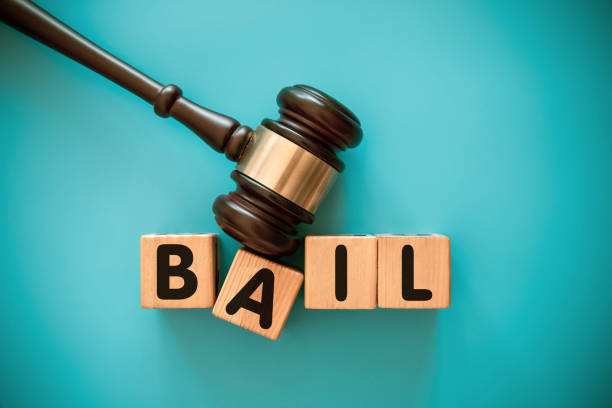A bail bond is a financial guarantee provided by a bail bondsman or bonding agency to secure the release of a defendant from custody pending trial. It serves as a means for individuals who cannot afford to pay the full bail amount set by the court to obtain release.
Working Mechanism:
- Engaging a Bail Bondsman: The defendant or their representative contacts a licensed bail bondsman or agency to secure a bail bond.
- Agreement and Payment: The bondsman charges a non-refundable fee, typically a percentage of the total bail amount, to post the bond on behalf of the defendant.
- Collateral or Guarantee: In addition to the fee, the defendant or their representative provides collateral, such as property or assets, as a guarantee against the bail bond.
Responsibilities of the Bondsman:
- Securing Release: The bondsman pays the full bail amount to the court as a guarantee of the defendant’s appearance at all required court dates.
- Assuming Liability: The bondsman becomes responsible for ensuring the defendant’s compliance with all bail conditions and court appearances.
Defendant’s Obligations:
- Payment of Fee: The defendant pays the non-refundable fee to the bondsman.
- Compliance with Conditions: The defendant must adhere to all bail conditions and appear at all scheduled court hearings.
Consequences of Non-Compliance:
- Bondsman’s Liability: If the defendant fails to comply with conditions or misses court appearances, the bondsman may be liable for the full bail amount.
- Collateral Seizure: The bondsman can seize and liquidate the provided collateral to cover the bail amount if the defendant breaches the agreement.
Is bail money refunded?
Whether bail money is refunded largely depends on specific circumstances and the outcome of the legal case. Here are the common scenarios:
Bail Refund Scenarios:
- Case Dismissal or Acquittal: If the defendant appears for all court dates and the case is dismissed, or the defendant is acquitted, the bail is typically refunded in full.
- Guilty Plea or Conviction: In the event of a guilty plea or conviction, the bail money is not refunded. It may be used to cover court fees, fines, or other expenses.
- Bail Bond or Bondsman’s Fee: If a bail bond was secured through a bondsman, the fee paid to the bondsman is typically non-refundable, regardless of the case’s outcome.
- Forfeiture or Non-Appearance: If the defendant fails to appear in court as required, the court may declare the bail forfeited, meaning it will not be refunded. The defendant might also face additional legal consequences.
Factors Affecting Bail Refund:
- Court Costs and Fees: Any outstanding court costs or fees might be deducted from the refunded bail amount.
- Bail Conditions Compliance: Bail refunds are contingent on the defendant’s compliance with all bail conditions and court appearances.
Return of Cash Bail or Collateral:
- Cash Bail: If the bail was paid directly to the court, and all conditions are met, the full bail amount is typically refunded.
- Collateral: If collateral was provided, it’s returned to the defendant or the individual who provided it, often after the legal proceedings conclude and bail conditions are met.
How does the calculator for bail bonds work?
The refund of bail money hinges on various factors, including the case outcome, compliance with bail conditions, and whether a bail bond or cash was used. It’s important to understand the terms and potential outcomes related to bail before proceeding with any payment or collateral.
A bail bond calculator is a tool used by bail bondsmen or agencies to estimate the cost associated with obtaining a bail bond for a defendant’s release from custody pending trial. Here’s an overview of how these calculators typically work:
Factors Considered in a Bail Bond Calculator:
- Bail Amount: The calculator considers the total bail amount set by the court, usually based on the severity of the alleged offense.
- Bondsman’s Fee: Bail bond companies charge a non-refundable fee, usually a percentage of the total bail amount, as their service charge.
Working Process of a Bail Bond Calculator:
- Entering Bail Amount: The user inputs the total bail amount set by the court into the calculator.
- Calculation of Bondsman’s Fee: The calculator applies the percentage fee set by the bail bond company to the bail amount to determine the fee due to the bondsman.
Example:
- For instance, if the bail amount set by the court is $10,000 and the bondsman’s fee is 10%, the calculator would estimate the fee to be $1,000.
Limitations and Variances:
- State Regulations: Bail bond fees and regulations vary by state, so the actual fee might differ based on state laws or company policies.
- Additional Costs: Some calculators might not include additional costs such as administrative fees or collateral requirements, leading to slight variations in the final amount paid to the bondsman.
Importance of Consultation:
- While a bail bond calculator can provide an estimate, it’s crucial for individuals seeking a bail bond to directly contact bail bond agencies for accurate and detailed information regarding fees, terms, and any additional requirements.
Conclusion:
A bail bond is a contractual agreement between a bondsman, the defendant, and the court, allowing the defendant’s release from custody by paying a fee and providing collateral. It serves as a financial guarantee of the defendant’s appearance in court and compliance with all bail conditions until the case concludes.

